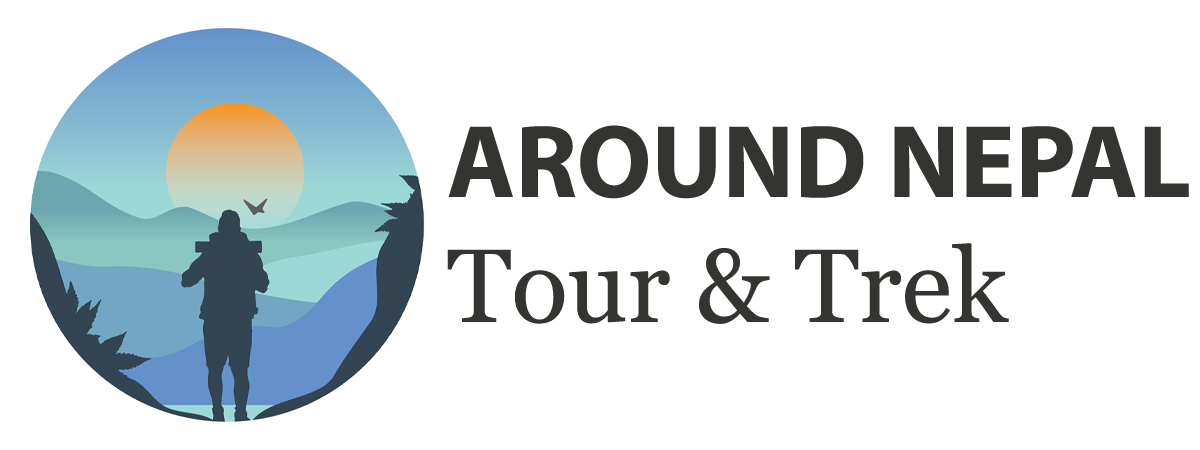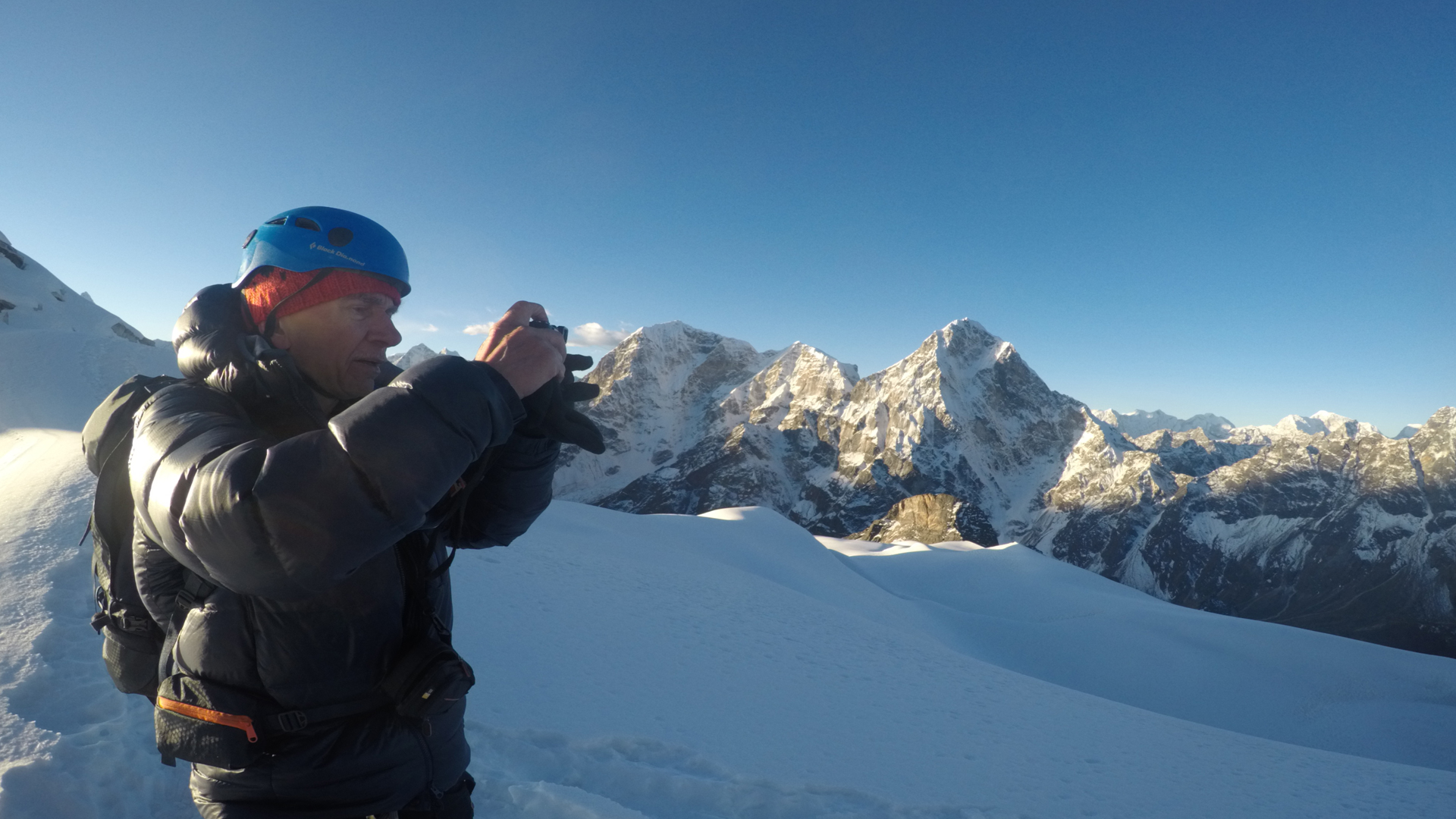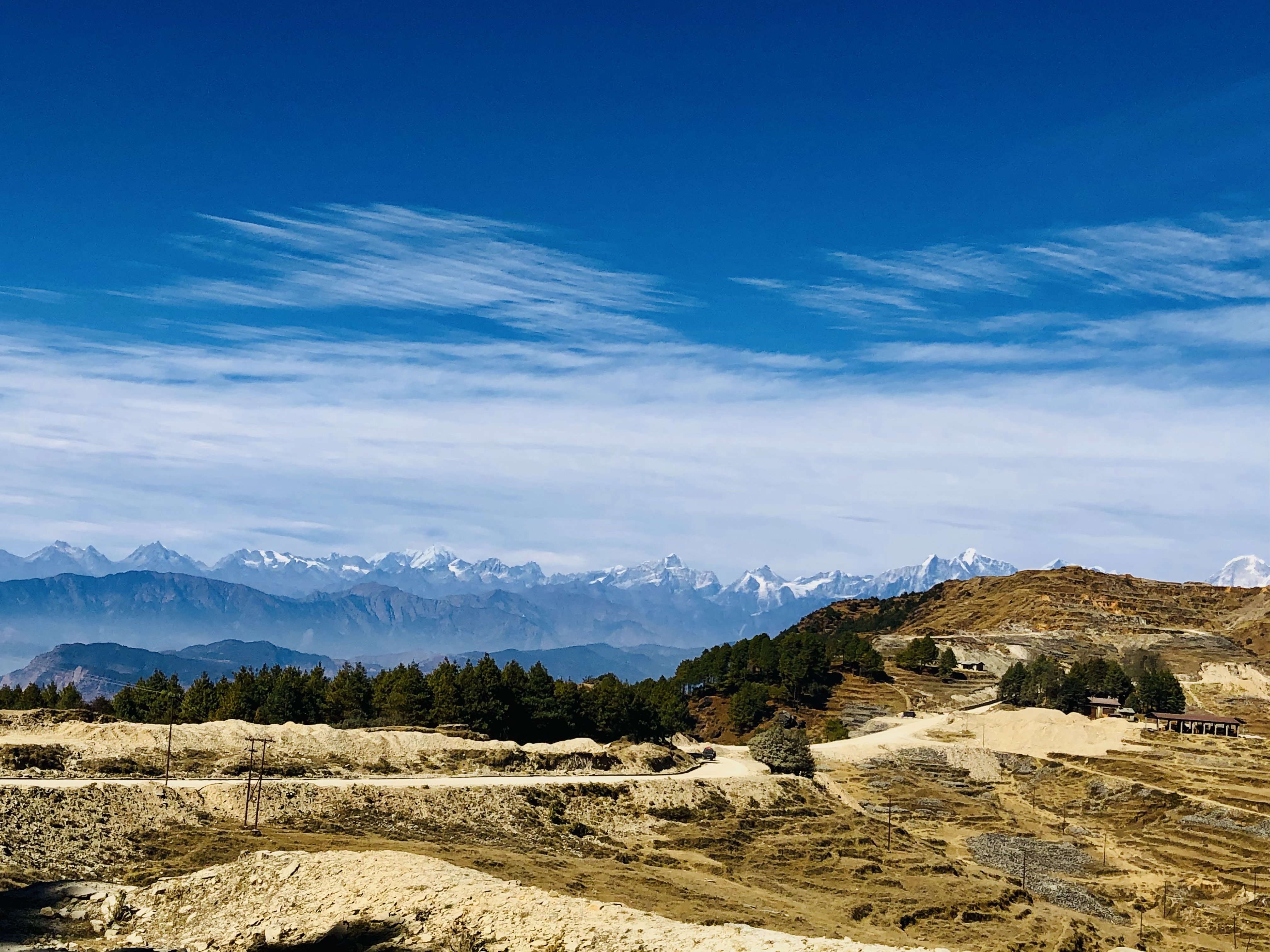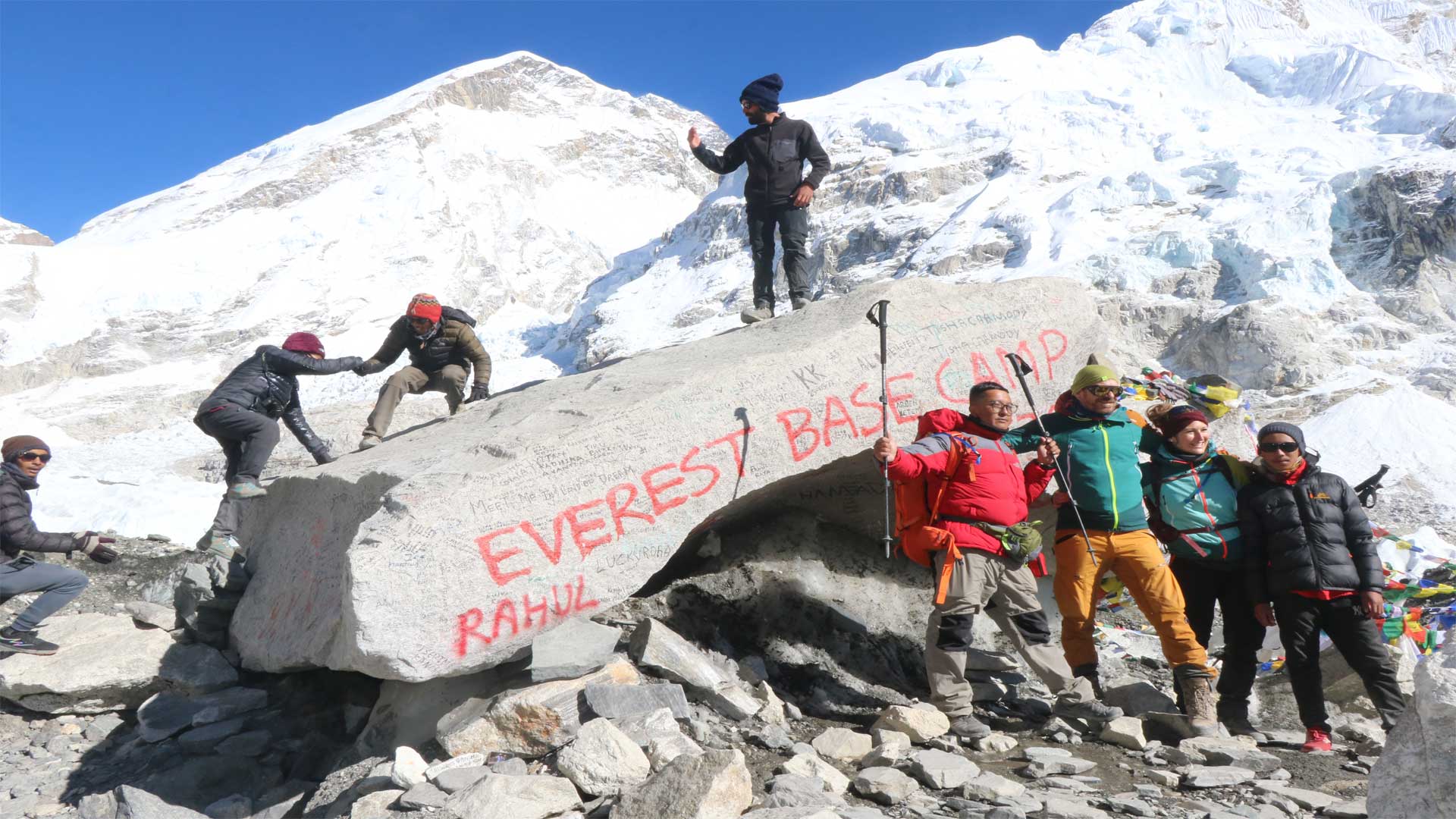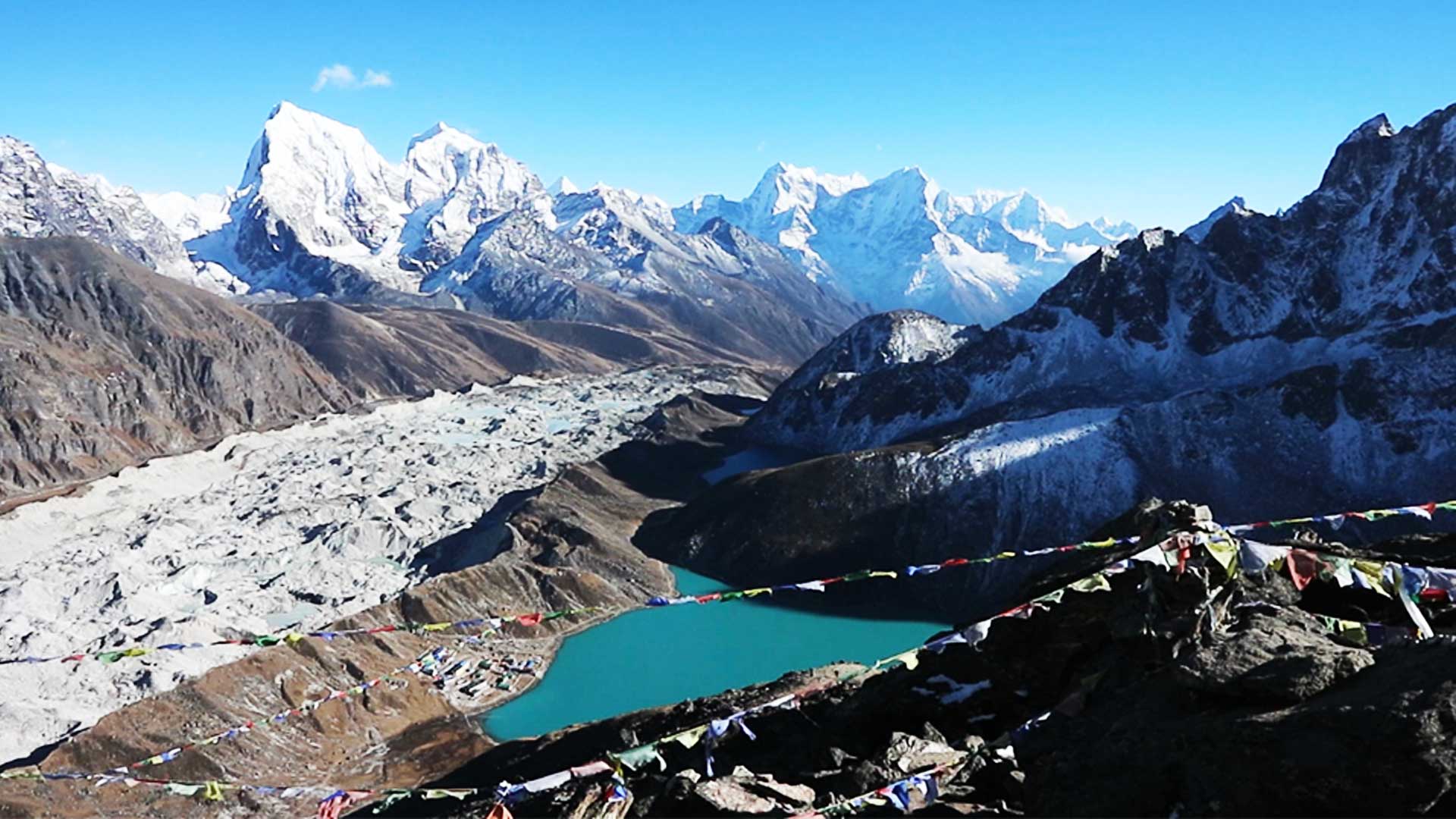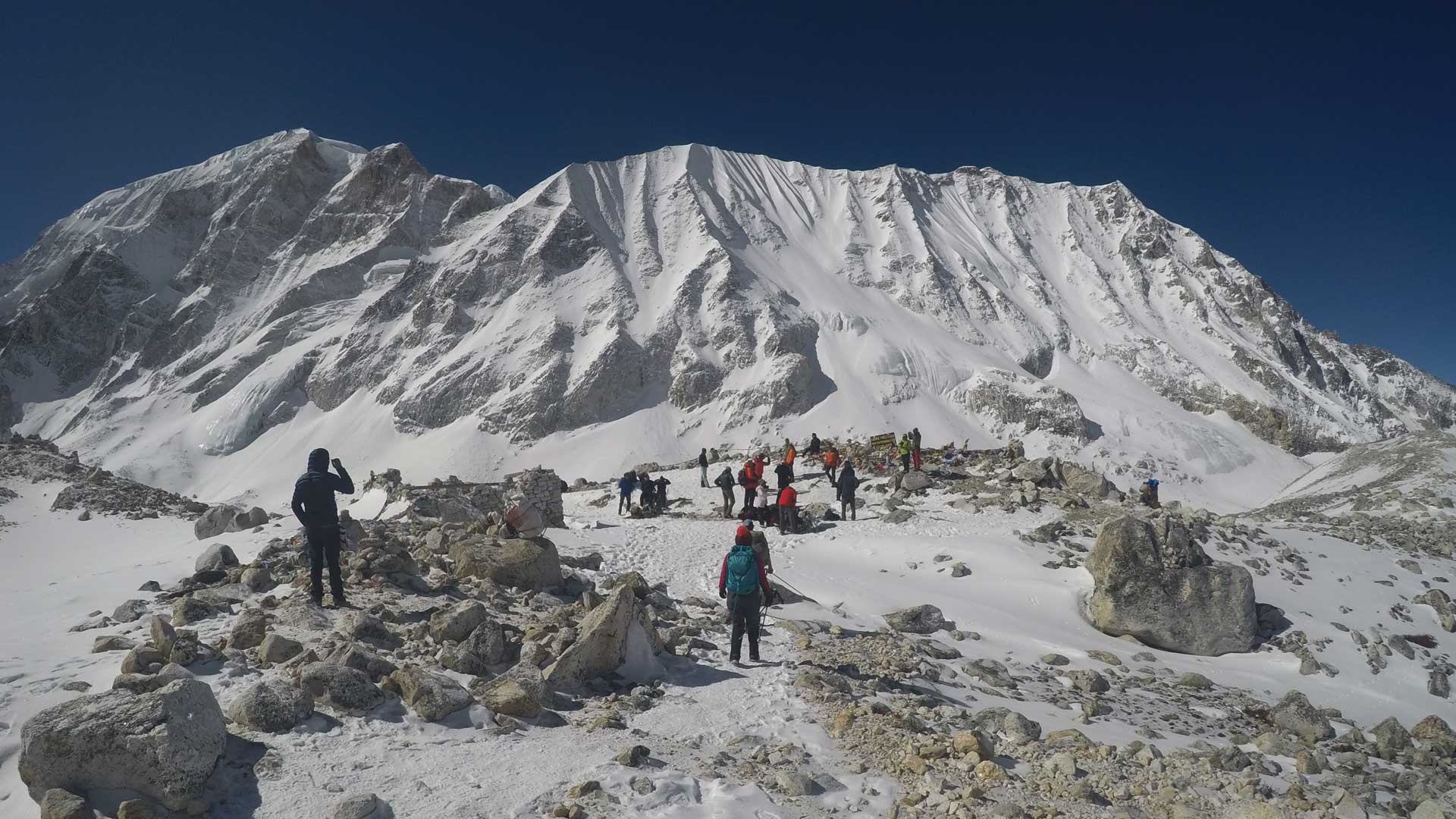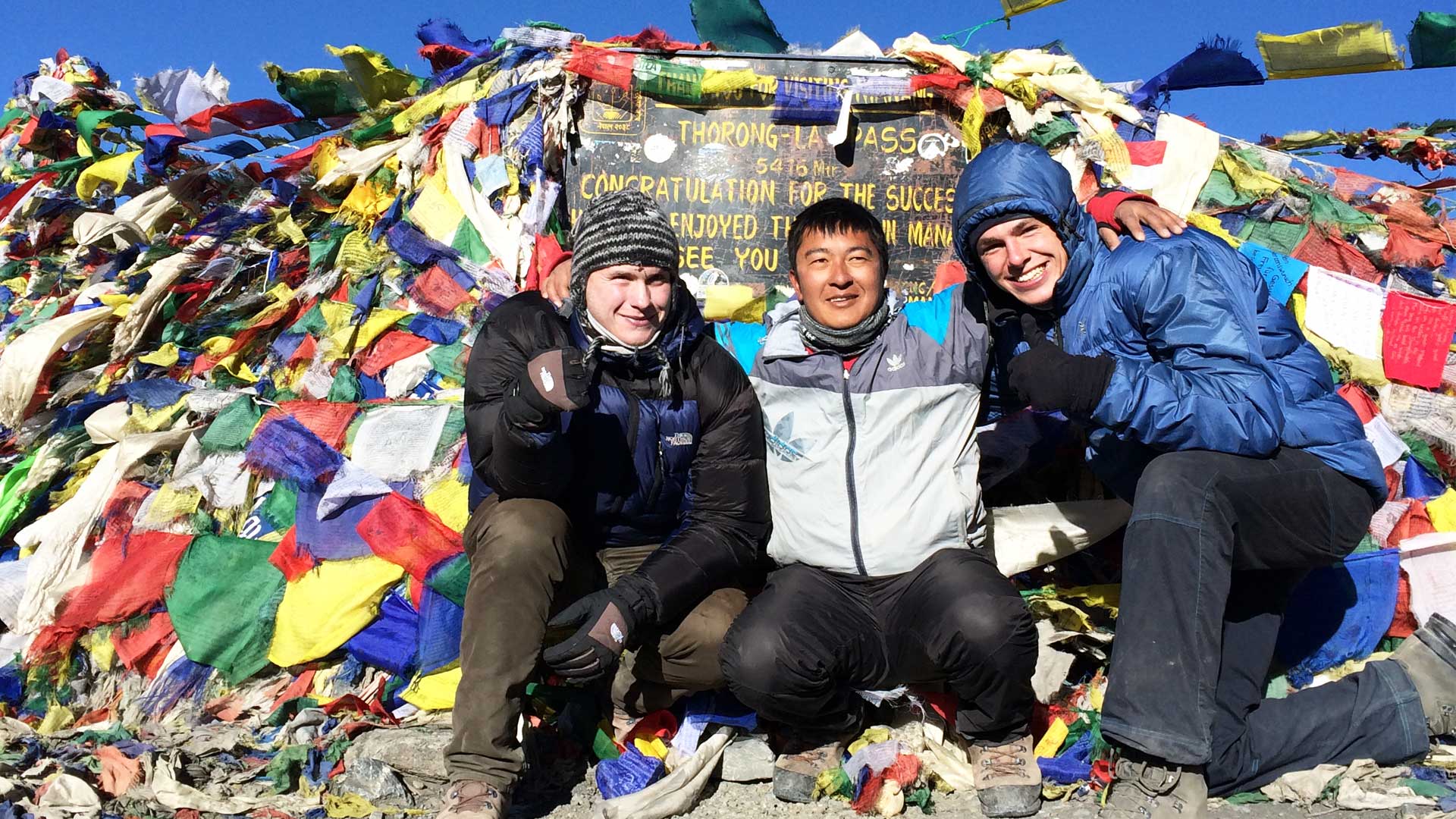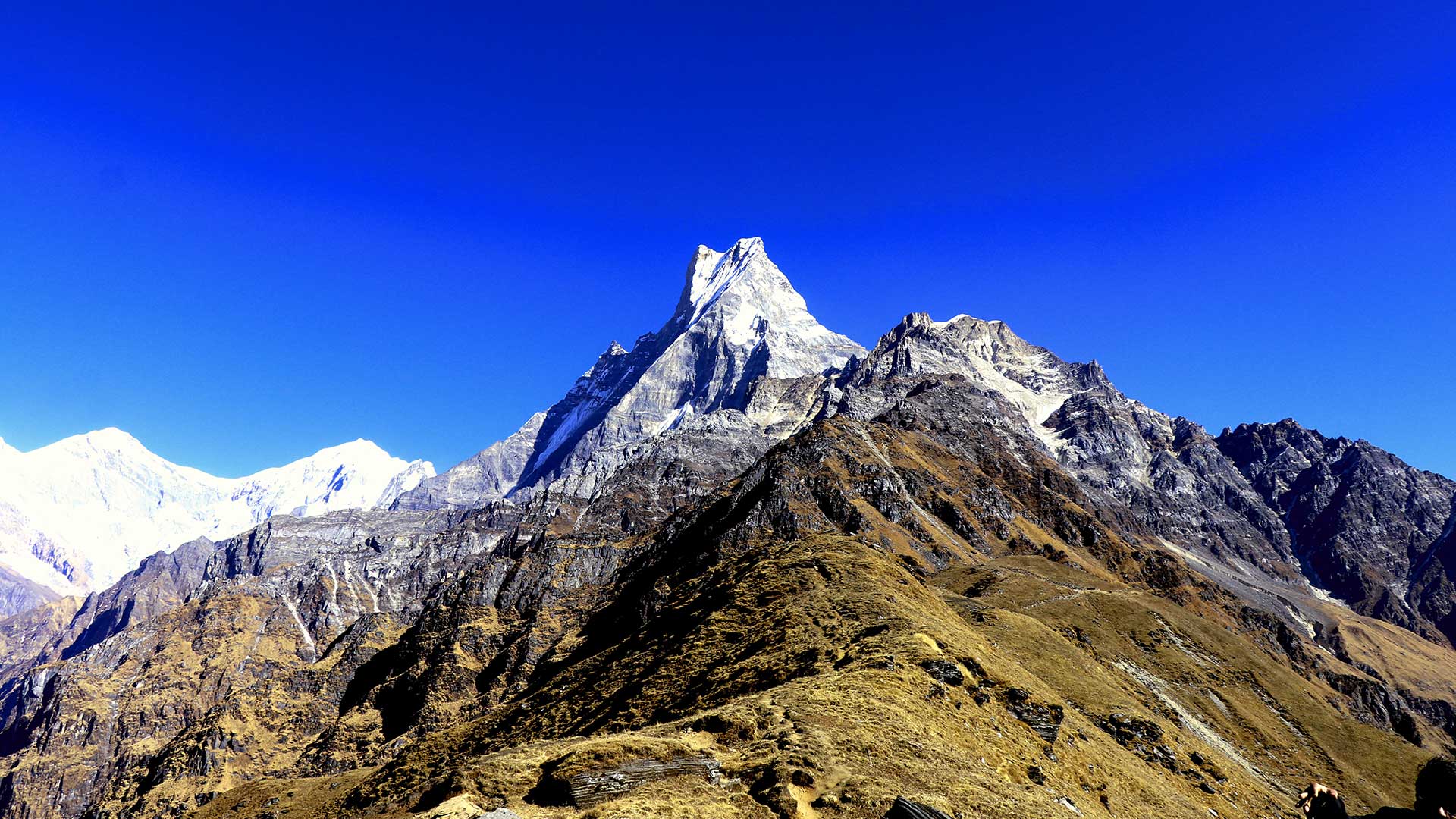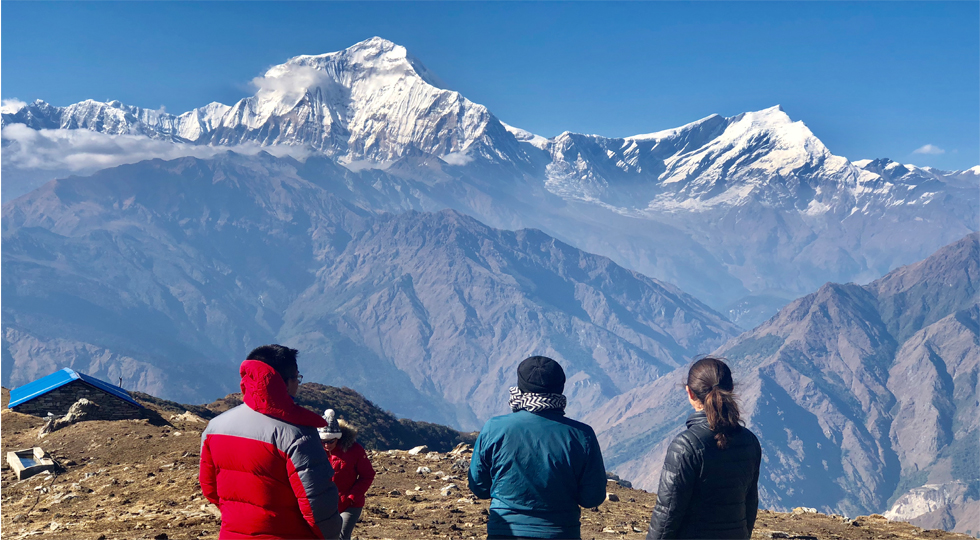Mera Peak Climbing
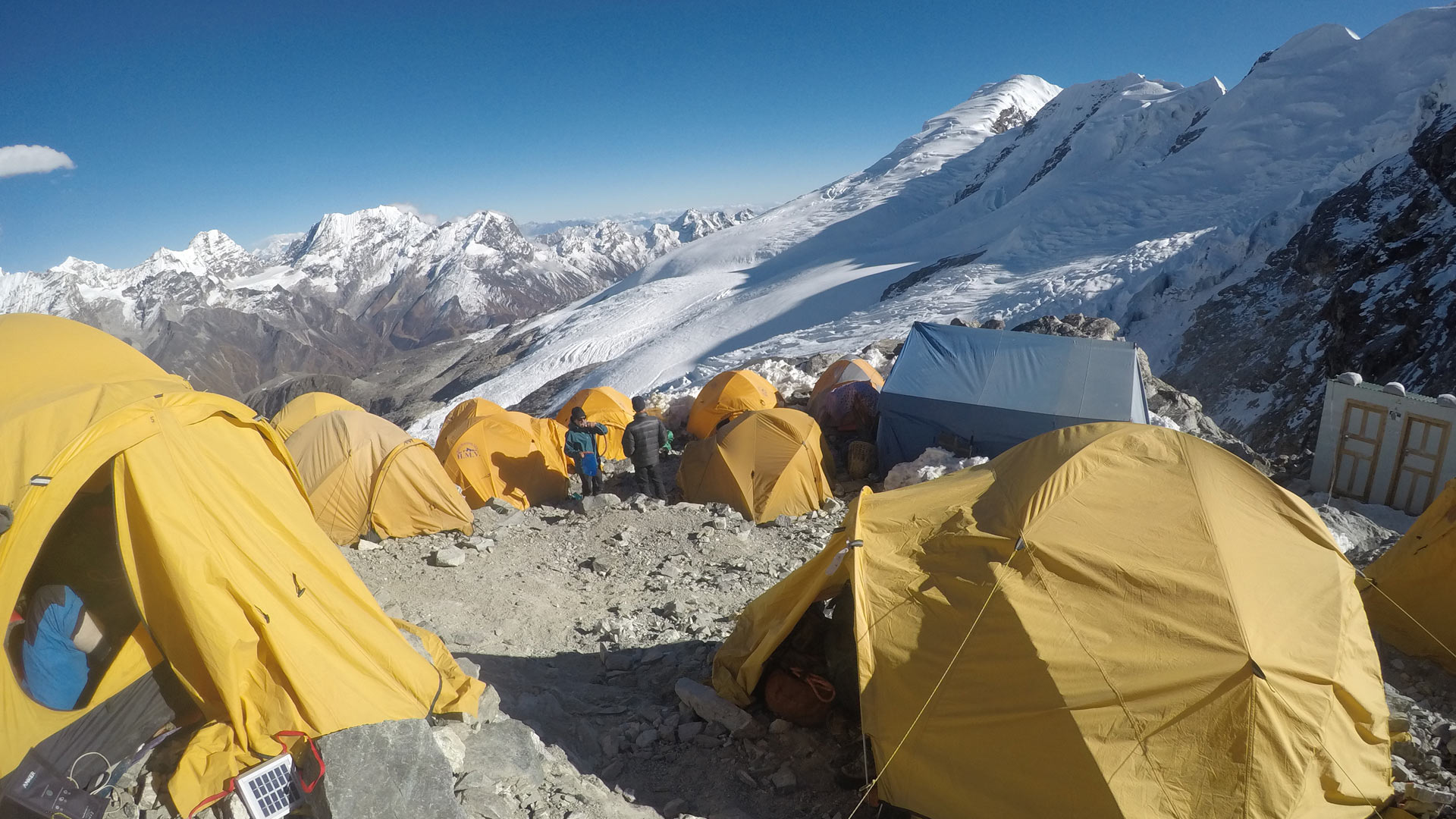
18 Days
6,465m
Spring & Autumn
Tea house and Tent
TRIP HIGHLIGHTS
- A high-altitude experience of 6,465 meters of Mera Peak with panoramic vistas
- The opportunity to take in incredible views of the world's tallest peaks, including Mount Everest, Lhotse, Cho Oyu, Makalu, and Kanchenjunga
- Immersion in local Sherpa and Rai ethnicities, their Buddhist and Kirat religions, traditions, cultures, local ways of lives
- Get experience climbing over crevasses, snowfields, and ice walls, among other things
- Witness sunrises from towering peaks with a golden hue
- Getting mountain climber's achievement, even if the visitor only has basic climbing skills
- Establishing a strong relationship with guide and climbers
- Experience the thrill of sleeping in high camp at an elevation of 5,900 meters
- Visit UNESCO World Heritage Sites in Kathmandu Valley, which is known for its architecture, ancient temples, monasteries, royal palaces and diverse cultures
TRIP OVERVIEW
Mera Peak is a mountain peak located at Hinku-Honku valley, Makalu-Barun sub-section, and summit peak 38 ridge in Khumbu Everest region. It is said to be an easy trekking mountain to conquer which was first ascent by Col J.O.M Roberts and Sen Tenzin on May 20, 1953 A.D. On a clear day, the summiteer can see the world's five 8,000-meter summits, Mt. Everest, Mt. Lhotse, Mt. Makalu, Mt. Cho-You, Mt. Kanchenjunga, and more than a dozen snowier peaks from the summit with amazing landscape too. There are three tough, Mera South (6,065m), Mera North (6,476m), and Mera Central (6,461m). Mera Central is the most climbing peak than the other two in the NMA National Mountaineering Association record.
The best seasons to climb Mera Peak
The months of April to June (spring season) and September to November (autumn season) are the best months to climb Mera Peak. These months are good for ascending Mera Peak since they bring consistent weather, bright skies, and pleasant temperatures.
Starting days in Kathmandu before heading to Mera peak
There are 3 main routes to reach Mera Peak. They are as below:
Option 1
Day 1: Arrival in Kathmandu
Day 2: Sightseeing and check the trekking and climbing gears
Day 3: Fly to Lukla then trek to Phakding
Day 4: Trek to Namche Bazaar
Day 5: Hiking to Everest view point Syangboche, trek to Monjo
Day 6: Trek to Chhuthanga via Lukla
Day 7: Trek to Kothe via Chhatrala pass
Day 8: Trek to Thagnag
Day 9: Trek to Khare
Day 10: Acclimatization Day at Khare
Day 11-12-13: Mera peak climbing
Day 14: Trek to Kothe
Day 15: Trek to Chhatra-la
Day 16: Trek to Lukla
Day 17: Fly from Lukla to Kathmandu
Day 18: Free day and departure
Option 2
Day 1: Kathmandu arrival
Day 2: Kathmandu Valley Sightseeing
Day 3: Fly to Lukla and trek to Paiya
Day 4: Trek to Pangom
Day 5: Trek to Ningso/Ramailo Danda
Day 6: Trek to Chhatra khola
Day 7: Trek to Kothe and follow the option 1 itinerary
Option 3
Day 1: Kathmandu arrival
Day 2: Kathmandu valley sightseeing
Day 3: Fly or drive to Phaplu
Day 4: Trek to Nunthala
Day 4: Trek to Kharikhola
Day 5: Trek to Pangoom
Day 6: Trek to Ningso/Ramailo Danda
Day 7: Trek to Chhatra Khola
Day 8: Trek to Kothe and follow the option 1 itinerary
The high-altitude sickness
High-altitude sickness is a severe problem when climbing and trekking in the mountains. High-altitude sickness happens when you are more than 2500m above sea level, but it is most typically felt in Nepal when you are more than 3,000m above sea level. High-altitude sickness symptoms include fatigue, vomiting, dizziness, headache, tiredness, and poor overnight sleep. According to the safety system, drink plenty of drinks and descend as quickly as possible or rest in the same spot. You can bring medicine, such as Diamox, or necessary supplies, as well as a Gama bag if one is accessible, and attempt to keep your body warm, or even better, follow mountain regulations.
The food and accommodation
The foods served during Mera peak trekking and climbing are pretty conventional and plain, yet they are plenty for 13 days of walking and two nights of camping. Tea house hiking breakfast options include bread with jam, honey, or peanut butter, as well as a range of omelet options. Boiling eggs, Tibetan bread, Chapati, Muscly with fruits and milk, and Corn Flex with milk are also available. Lunch and supper menu items include Dal-Bhat set, Curry with rice, soups, Mo:Mos, Spaghetti with tomato sauce, Fried Potato with vegetable/cheese, spring roll, and other dishes. The rooms are standard two-person rooms, but they are quite neat and clean, along with there is an outside bathroom. You spend in the tent for two nights, including all meals and lodging.
The communication and transportation
The starting and ending points of your tour decide the form of transportation. If you begin as well as conclude your trek at Lukla. You fly from Kathmandu to Lukla or Manthali to Lukla, then take a private Jeep back to Kathmandu. If you begin your journey in Phaplu, you can take the Jeep from Kathmandu to Phaplu and then trek back, but to return, you must fly from Lukla to Manthali/Kathmandu and then take the Jeep. Most trekking places can also be reached via phone call or online communication. We may provide you with a Nepalese sim card if necessary; however, please remember to return after you completed your stroll.
People, culture, and religion along the Mera peak journey
This region is primarily inhabited by Sherpa and Rai ethnicities. The Sherpa community practices Buddhist culture and religion, while the Rai community practices Animism (they adore and worship nature). The majority of them work in the tourism hotel industry, as trekkers, or on agriculture.
The cost of climbing Mera Peak and the facilities offered
The services offered affect the cost of trekking/climbing. Our company charges USD 2,950 per person, which covers round-trip transportation from the airport to the departure location. 3-night Kathmandu hotel with bed and breakfast, ancient city Kathmandu valley tour with our expert English-speaking city guide, including Kathmandu Durbar Square, Swoyambhunath Stupa, Boudhanath Buddhist Monastery, and Pashupatinath Hindu Temple, domestic flight ticket from Kathmandu/Manthali to Lukla and same way back. Private transportation from Manthali to Kathmandu via car or jeep. All foods and accommodations throughout tea house hiking and climbing Mera peak, (you can choose the foods everywhere and every time from the menu but 1 time for 1 item with 1 bowl of soup in the evening if you want, and you can take 3-5 cups of tea or required goods every day). All official documentation, including trekking and peak climbing permits, Sagarmatha National Park permits, Makalu Barun National Park permits, PashangLhamu Rural Municipality licenses, TIMS cards, guide and crew member salaries, foods, accommodations, transportation, medicine, and insurance.
Mera peak trekking and climbing equipment
The following is a list of Mera Peak climbing equipment for guests:
1. climbing and trekking boots
2. crampon, main rope, and three carabiners 1 figure 8 / descendant
3. ascender/Jumar
4. ice axes, 2 meter and half-meter tape slings
This equipment list is sufficient for the Mera peak guest climber. The rest of these goods are required, including high-quality gloves, sun and snow glasses, a Gore-Tex jacket, a Gator, a climbing helmet, and a trekking pole. We recommend that you bring your own Climbing Boots and Crampons. You may purchase the remaining items from Khare near Mera Peak.
SHORT ITINERARY
Day: 1 Arrival in Kathmandu (1,400 meters)
Day 2: Sightseeing in Kathmandu Valley and checking out trekking and climbing equipment
Day 3: Fly to Lukla Airport (3,450m), then trek to Phakding (2,610m)
Day: 4 Phakding to Namche Bazaar (3,450m)
Day 5: Hiking to Everest view point Syangboche (3,880m), trek to Monjo (2,835m) or Phakding (2,610m)
Day 6: Trek from Monjo or Phakding to Chhuthanga (3,450m) via Lukla (2,860m)
Day 7: Trek from Chuthanga to Kothe (3,600m) via Chhatra La pass (4,600m)
Day 8: Trek from Kothe to Thagnag/Tangnag (4,350m)
Day 9: Trek from Thagnag/Tangnag to Khare (5,045m)
Day 10: Acclimatization Day at Khare
Day 11-12-13: Climbing Mera Peak, then returning to Khare
Day 14: Trek back from Khare to Kothe
Day 15: Trek from Kothe to Thuli kharka
Day 16: Trek back from Thuli Kharka to Lukla via Chhatra La Pass
Day 17: Fly back from Lukla to Kathmandu
Day 18: Free day and departure
DETAILED ITINERARY
Day: 1 Arrival in Kathmandu (1,400 meters)
When you arrive at Kathmandu's Tribhuwan International Airport, our company representative will meet you to transport you to the hotel in Thamel. Kathmandu is Nepal's vibrant city, with bustling markets, oldest temples, monasteries, royal palaces, seven UNESCO World Heritage Sites, and friendly residents. You have time to explore the tourist hub Thamel and shop up on travel necessities. In the evening, you will be treated to a welcome dinner at a local restaurant, complete with local cultural music and dances.
Day 2: Sightseeing in Kathmandu Valley and checking out trekking and climbing equipment
Today, you have the opportunity to see three of the seven UNESCO World Heritage Sites in Kathmandu Valley. After a light breakfast, you will visit Swayambhunath Stupa, widely known as the Monkey Temple, a Buddhist and Hindu temple with panoramic views of the Kathmandu Valley. Following that, you will visit Kathmandu Durbar Square, which is home to historical palaces, temples, and complex architecture. In the afternoon, you will visit Pashupatinath Temple (Nepal's largest temple), which is located on the banks of the Bagmati River. When you return to your lodging, make sure you have trekking and climbing equipment, as well as your other belongings. Our company rents out trekking and climbing equipment at a reasonable price. If you physically damage rental equipment, you must pay the full cost of the equipment.
Day 3: Fly to Lukla Airport (3,450m), then trek to Phakding (2,610m)
Today, you have around 35 minutes to take a picturesque domestic flight from Kathmandu to Luka Airport (Tenzing-Hillary Airport).
Tenzing-Hillary Airport was named after Sir Edmund Hillary and Tenzing Norgay, the first climbers to reach the peak of Mount Everest in 1953. The airport is located at a height of 2,845 meters in the Solukhumbu district of Nepal. It is the entry point to the Everest region, attracting trekkers and climbers from all over the world. It is also known as the world's most dangerous airport because to its sloppy and narrow runway, mountain topography, and sudden weather changes, among other things. Flights can be delayed or canceled as a result of weather-related issues. It is recommended that you plan for extra days in case of flight delays.
When you arrive at the airport, our company crew members will assist you in carrying your belongings. Then you have breakfast and begin your 3- to 4-hour trip to Phakding. You pass through numerous enchanting villages, including Chaurikharjka, Chheplung, and Thadokhola. Your journey continues through Ghat and then to Phakding, where you will stop for lunch.
The Lukla-Phakding trail not only offers an amazing visual show, but it additionally serves to protect the Sherpa way of life, culture, suspension bridges, and the Dudh Koshi River, among many other attractions. The trail is decorated with multicolored prayer flags, prayer wheels, and chortens that represent the region's spiritual character.
Day: 4 Phakding to Namche Bazaar (3,450m)
After having a little breakfast, you head to Namche Bazaar (3,450m). You will be checked your trekking permit in Jorsalle and you have a chance to walk on the Hillary suspension bridge which is the final suspension bridge to cross before reaching Namche Bazaar. This bridge is named after Sir Edmund Hillary, the first person to climb Mount Everest alongside Tenzing Norgay Sherpa. It is located above the Dudh Koshi River (White Colored River). This bridge is adorned with bright prayer flags and a Khada (Buddhist shawl). The majority of visitors take a break at the bridge's end to photograph or video the scene. Then you hike to Top Danda for an in-depth view of Mount Everest, Lhotse, and Nuptse. Today's trail traverses the Dudh Koshi River through the heart of the Everest region, with filled rhododendron forests and attractive Sherpa settlements.
Day 5: Hiking to Everest view point Syangboche (3,880m), trek to Monjo (2,835m) or Phakding (2,610m)
Today you proceed to Syangboche, an adorable village in Nepal's Khumbu region at an elevation of 3,880 meters. It provides a distinctive combination of natural beauty and cultural riches. You hike early in the morning to Syangboche danda, popularly referred to as the Everest view point. This vantage point, Everest View Point is the best options to see the views of stunning sunrise or sets, the golden hues moves upon icy highest point of Mt. Everest along with its adjacent peaks: Mt. Aamadablam, Mt. Lhotse, Mt. Nuptse, peak 38, Mt. Thamserku, Mt. Kusum Kangaroo, Island peak, Tobuche peak, Kongde peak, Numbur and Thamo peak and more peaks.The route allows visitors to see highland Sherpa settlements, culture, and way of life, as well as green valleys, lush hillside, rhododendron forest, and other exquisite spots such as Khumjung-Khunde village, Tengboche monastery (3,867m), and Imjatse valley.
Tengboche monastery stands in Nepal's Sagarmatha National Park in the Khumbu region. It is significant for natural, cultural, and spiritual reasons. It provides breathtaking views of the world's tallest peaks such as Mount Everest, Lhotse, Nuptse, Ama Dablam, and Thamserku, among others. The colorful Mani Rimdu festival is celebrated here by dancing, singing, and religious performances. This monastery prioritizes meditation and spiritual practice.
After returning from this point, you have breakfast at your hotel before continuing your climb to Monjo (2,835m) or Phakding (2,610m).
Phakding is the entry point for the popular Everest Base Camp Trek. The nearby slope gets covered in beautiful flora, including pine and rhododendron forest. The Dudh Koshi River flows alongside the village, adding to the peaceful atmosphere. The village is distinguished by traditional Sherpa architecture, with stone buildings embellished with multicolored prayer flags and outstanding woodwork.
Monjo is a little village that offers glimpses of Sherpa culture and way of life. It is the entrance point to the Sagarmath National Park, where visitors' permit cards are examined and registered. Monjo is characterized as a Phakding. Overnight hotel at Monjo or Phakding.
Day 6: Trek from Monjo or Phakding to Chhuthanga (3,450m) via Lukla (2,860m)
The trail returns you to Lukla, where you can have lunch or continue the 3 hour walk to Chhuthanga for accomodation. Climbers often stop at Chhuthanga on their way to Mera Peak Base Camp. This day, you take a trip through the pine and bright Rhododendron forest, passing by multicolored praying flags and tiny settlements. Overnight hotel at Chhuthanga.
Day 7: Trek from Chuthanga to Kothe (3,600m) via Chhatra La pass (4,600m)
The trail takes you to the top of the 4,600m Chhatra La pass, then through Thuli Kharka and lastly to Kothe for accomodation. The pass is rather high, and you will have to walk on snow at times, but the little river stream, colorful Rhododendron forest, juniper forest, Sherpa community, and the beauty of Hongku-Hinku valley will make your adventure memorable and fruitful. Kothe is a small village in Nepal's Solukhumbu district, within the Khumbu region, that includes simple teahouses and lodges that serve to trekkers' requirements. Overnight at the hotel.
Day 8: Trek from Kothe to Thagnag/Tangnag (4,350m)
Thagnag is located in a valley surrounded by majestic mountains and glaciers, providing breathtaking views of the Himalayas. The path is medium in difficulty. It also provides trekkers with an ideal opportunity to acclimate to the thinner air and minimize the risk of altitude-related illness before exploring the Mera Peak Climibing. You can go through the forest and villages with the natives if you desire. You will have the opportunity to learn about and experience the unique Rai ethnicity, culture, and religion, as well as the well-known Sherpa Buddhist culture. It is made up of modest teahouses and hotels. Overnight stay at a hotel.
Day 9: Trek from Thagnag/Tangnag to Khare (5,045m)
The trail brings you to the last settlement or resting place, Khare, where you may admire the splendor of the Hinku-Honku Valley/Hinku Hongu Valley. The valley is located in the Solukhumbu area of Nepal. Trekkers spend time here acclimatizing to high altitude before continuing to higher altitudes, such as Mera Peak climbing. Khare offers simple teahouses and lodges, facilitating the warm welcome of the local Sherpa community. Mera peak, Charpate peak, and many others can be observed in the area. Overnight hotel stay in Khare.
Day 10: Acclimatization Day at Khare
Today is your free day. You can visit around the side. Our guide will train you about the basic climbing roules. Overnight hotel at Khare.
Day 11-12-13: Climbing Mera Peak, then returning to Khare
The trail leads you to your ideal destination, Mera peak climbing. Where you are able to see stunning close-up panoramic views of the world's five tallest mountains, Mount Everest, Lhotse, Makalu, Cho Oyu, Kanchenjungha, and many more above 8,000 meters. The first day, you move to Mera High Camp in order to take benefit of the finest weather conditions and attempt to summit Mera Peak, where you will spend the night in a camping tent. You have to eat and sleep in the tent. On the next morning, try to ascend Mera peak. This day necessitates climbers' good physical and mental health, prior hiking experience, and basic climbing ability. Climbers need to have suitable climbing equipment and requirements. It is advised that you remain attentive to the ideas of guides or climbers in addition to your own effort, skills, and knowledge. If you succeed, return to the High Camp and descend to Khare. If you are unable to ascend Mera Peak, stay at high camp for one more night to attempt again. If you are unable to climb Mera Peak, return to Khare. Overnight in Khare at a hotel
Day 14: Trek back from Khare to Kothe
You take the same route from Khare to Kothe outlined in the day itinerary above. You will pass via Thagnag/Tangnag before arriving in Kothe during this time. You can expect a decrease in elevation as you descend the trail from Khare to Kothe.
Day 15: Trek from Kothe to Thuli kharka
You return to Thulikharka after getting your breakfast at Kothe. This day differs from the previous one in that it follows an uphill rather than a downhill path. Thulikharka exists close to Hongku-Hinku Valley. You back a second time to enjoy Thuli Kharka.
Day 16: Trek back from Thuli Kharka to Lukla via Chhatra La Pass
You pass via Chhatra La one more time before reaching Lukla from Thuli Kharka. You have to ascend before commencing the downhill trail. The trail takes about 7 hours to return to Luka. So make your last night memorable by spending it in Lukla.
Day 17: Fly back from Lukla to Kathmandu
You fly back to Kathmandu in about 45 minutes. Our representative will bring you from the airport to your accommodation. If you arrive in Kathmandu in the afternoon, you have time for a sightseeing tour around the touristy hub Thamel or you can purchase some gifts for your family, friends, relatives, or for your personal use materials. Finally, you will be treated to a farewell meal with music and dancing in celebration of your successful journey in Nepal.
Day 18: Free day and departure
If your flight departs at night, you will have more time for shopping in Nepal. Otherwise, you rest until it's time to check out of your hotel. Finally, a representative from our company will transport you to Tribuwan International Airport in Kathmandu.
FREQUENTLY ASKED QUESTIONS
Is Mera Peak hard to climb?
Mera peak does not require strong technical climbing skills, but it presents major challenges due to its high altitude and associated risks. A secure and successful climb requires proper preparation, physical and mental fitness, the guidance of a guide or climbers, and acclimatization. It is advisable to be well-informed and trained about climbing Mera Peak or any other equivalent high altitude peak.
Can a beginner climb Mera Peak?
Mera Peak can be climbed by a beginner with appropriate physical and mental fitness as well as proper basic climbing training. Mera Peak is frequently referred to as a "trekking peak" due to the lack of technical climbing skill required. As a result, it is classified beginning climbing, but it still contains the risk of high altitude sickness and the related risks.
How long does it take to climb Mera Peak?
Climbing Mera peak typically takes 17 to 19 days. The duration of Mera Peak is determined on the climber's chosen route, physical fitness, weather conditions, daily walking pace, acclimatization days, and other factors.
Is Mera Peak harder than Kilimanjaro?
Mera peak is definitely more difficult than Kilimanjaro because of its higher altitude, weather conditions, and the necessity for good climbing preparation.
